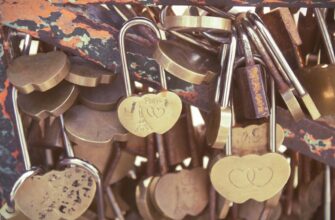## Introduction
Protecting your cryptocurrency investments starts with securing your hardware wallet. For Ledger users, cold storage offers the ultimate defense against online threats. This beginner-friendly guide explains how to safeguard your Ledger device in cold storage—keeping your crypto offline and out of hackers’ reach. We’ll cover setup steps, best practices, common pitfalls, and FAQs to ensure even newcomers can confidently lock down their digital assets.
## What Is Cold Storage and Why Use It for Your Ledger?
Cold storage means keeping your cryptocurrency completely offline, disconnected from the internet. Unlike “hot wallets” (software-based and internet-connected), cold storage eliminates exposure to hacking, malware, and phishing attacks. For Ledger hardware wallets—like the Nano S or Nano X—cold storage involves generating and storing your private keys offline. This method is crucial because Ledger devices manage access to your crypto; if compromised, you could lose everything. By using cold storage, you create an impenetrable barrier, ensuring only you control your funds.
## Step-by-Step Guide to Setting Up Cold Storage for Your Ledger
Follow these steps to securely transition your Ledger to cold storage:
1. **Initialize Your Device**: Unbox your Ledger, connect it to a trusted computer via USB, and follow on-screen prompts to set a strong PIN (8 digits recommended). Never share this PIN.
2. **Generate Recovery Phrase**: During setup, your Ledger will create a 24-word recovery phrase. Write this down manually on the provided card—never digitally. Store it in a fireproof safe or safety deposit box.
3. **Disconnect and Power Off**: Once set up, disconnect the Ledger from your computer and turn it off. This ensures it remains offline.
4. **Transfer Crypto to Your Ledger**: Send a small test amount from an exchange or hot wallet to your Ledger’s public address. Confirm receipt via Ledger Live (disconnect after).
5. **Secure Physical Storage**: Place the powered-off Ledger and recovery phrase in separate, tamper-evident locations (e.g., home safe + bank vault).
## Best Practices for Maintaining Your Ledger in Cold Storage
Adopt these habits to maximize security long-term:
– **Regular Integrity Checks**: Every 3–6 months, power on your Ledger to verify firmware updates (install via Ledger Live in a secure environment).
– **Recovery Phrase Protection**: Never digitize your seed phrase—no photos, cloud storage, or email. Use metal backups (e.g., Cryptosteel) for fire/water resistance.
– **Controlled Access**: Restrict physical access to your storage locations. Share details only with trusted heirs via secure methods.
– **Transaction Protocol**: When sending crypto, reconnect your Ledger briefly in a malware-free setting, sign the transaction, then disconnect immediately.
– **Avoid Public Networks**: Only use private, password-protected Wi-Fi during rare connections.
## Common Mistakes to Avoid
Steer clear of these critical errors:
– **Storing Recovery Phrases Digitally**: Screenshots or text files are easily hacked—always use physical, offline storage.
– **Skipping Test Transactions**: Failing to send a small test transfer risks losing funds to incorrect addresses.
– **Using Damaged Hardware**: If your Ledger is physically compromised, move funds to a new device immediately.
– **Ignoring Firmware Updates**: Outdated firmware can have vulnerabilities; update promptly but cautiously.
– **Reusing Addresses**: For privacy, generate new receiving addresses for each transaction via Ledger Live.
## FAQ Section
**Q: How often should I check my Ledger in cold storage?**
A: Check every 3–6 months for firmware updates. Avoid frequent handling to minimize physical risks.
**Q: Can I use my Ledger without ever connecting it online?**
A: Yes! You can receive crypto anytime (addresses are public), but sending requires a brief, secure connection to sign transactions.
**Q: What if I lose my Ledger device?**
A: Your crypto is safe if you have the recovery phrase. Buy a new Ledger, enter your 24 words, and regain access.
**Q: Is a bank safety deposit box safe for cold storage?**
A: Yes, for physical devices and recovery phrases. However, diversify storage—never keep both in one location.
**Q: Can malware steal crypto from a disconnected Ledger?**
A: No. Malware can’t access offline devices. Risks only arise during brief connections—always verify addresses on your Ledger screen.
**Q: Do I need multiple Ledgers for cold storage?**
A: Not necessarily, but a backup device (initialized with the same recovery phrase) adds redundancy if your primary is lost or damaged.
By following this guide, you’ll transform your Ledger into a fortress for your crypto. Remember: Cold storage security hinges on offline discipline and physical safeguards. Start small, stay consistent, and your investments will remain protected for years to come.








